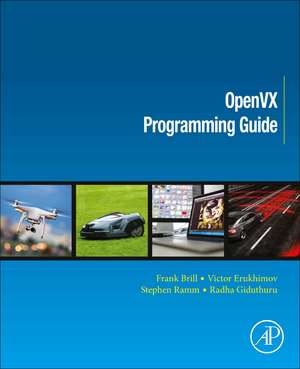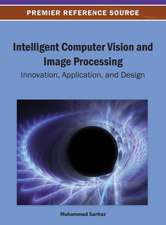OpenVX Programming Guide
Autor Frank Brill, Victor Erukhimov, Radhakrishna Giduthuri, Steve Rammen Limba Engleză Paperback – 26 mai 2020
This book gives a high-level overview of the OpenVX standard, its design principles, and overall structure. It covers computer vision functions and the graph API, providing examples of usage for the majority of the functions. It is intended both for the first-time user of OpenVX and as a reference for experienced OpenVX developers.
- Get to grips with the OpenVX standard and gain insight why various options were chosen
- Start developing efficient OpenVX code instantly
- Understand design principles and use them to create robust code
- Develop consumer and industrial products that use computer vision to understand and interact with the real world
Preț: 434.24 lei
Preț vechi: 671.78 lei
-35% Nou
Puncte Express: 651
Preț estimativ în valută:
83.10€ • 86.44$ • 68.61£
83.10€ • 86.44$ • 68.61£
Carte tipărită la comandă
Livrare economică 07-21 aprilie
Preluare comenzi: 021 569.72.76
Specificații
ISBN-13: 9780128164259
ISBN-10: 0128164255
Pagini: 372
Dimensiuni: 152 x 229 mm
Greutate: 0.49 kg
Editura: ELSEVIER SCIENCE
ISBN-10: 0128164255
Pagini: 372
Dimensiuni: 152 x 229 mm
Greutate: 0.49 kg
Editura: ELSEVIER SCIENCE
Public țintă
Engineers developing products with a component of computer vision and intelligence in areas such as automotive safety, video surveillance, computational photography, autonomous mobile robots and drones. Computer Engineering students and researchersCuprins
1. Introduction2. Build your first OpenVX program3. Using the Graph API to write efficient portable code4. Building an OpenVX graph5. Deploying an OpenVX graph to a target platform6. Basic image transformations7. Background subtraction and object detection8. Computational photography9. Efficient data input/output10. Tracking11. Use OpenVX for deep neural networks12. OpenVX safety critical applications13. Using OpenVX with other vision frameworks14. Making the most of your OpenVX code






















